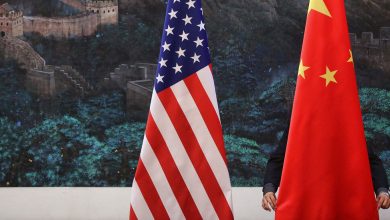America Isn’t Ready for the Electric-Vehicle Revolution

Vladimir Putin, the president of Russia, last month added his voice to a bullish chorus predicting $100-a-barrel oil — double the price at the start of the year. He may have been showing restraint: Some traders are betting on an unprecedented $200 a barrel by the end of 2022. The return of a frenzied oil market is conjuring up unwelcome memories of a global petroleum goliath with the power to influence Western geostrategy and roil societies everywhere.
Yet this is the old story. We now stand at the precipice of the age of batteries and electric vehicles, technologies likely to steamroll fossil-fuel companies and petro states. From a few thousand fully electric cars sold around the world in the late aughts, consumers are on track to buy four million of them this year.
So far, the United States appears to be little more than a spectator to this revolution. While its battery and automakers are poised to produce cutting-edge batteries and popular electric vehicles, they will rely almost entirely on a supply chain controlled by China. Over the past decade, China has built up most of the world’s capacity to process the metals that make lithium-ion batteries — the heart of the electric vehicle revolution — work. It is this capacity that puts China in the catbird seat in the race for the future while America falls farther and farther behind.
Following the financial crash of 2008, the United States and China, along with Japan, South Korea and other countries, began an undeclared race to create and reap the dividends of the E.V. industry, including associated businesses such as battery production. This led the United States and China to inject stout public funding into battery and E.V. start-ups and established companies, in hopes of kick-starting an economic recovery.
In the United States, initially buoyant public and political support for President Barack Obama’s strategy eroded within just a couple of years, following accusations of squandered public funds in a government-backed loan to Solyndra, a California solar panel company that fell victim to cheap Chinese imports.
In China, by contrast, state-backed companies have secured a reliable supply of the raw metals and elements behind E.V. batteries. In the last three and a half years alone, Chinese companies have been the biggest international buyers of additional lithium assets amid soaring prices for the metal.
By 2018, Chinese companies also owned half of the largest cobalt mines in the Democratic Republic of Congo, the source of most of the world’s supply of the metal. Government funding for China’s electric vehicle sector during the past decade amounted to more than $100 billion, according to a study by the Center for Strategic and International Studies.
Even more important, China supported companies that would process these materials into the electrodes that go into battery cells. This is the more crucial part of the battery supply chain: After the labor-intensive, often dirty extracting of the metals comes the refining of nickel, cobalt and manganese into sulfates, then into precursors used to produce the cathodes that go into battery cells.
China’s decision a decade ago to knit all the pieces of its battery supply chain together into a comprehensively controlled, globe-spanning industry has yielded it genuine strategic power. Turning ore into electrodes is far trickier than extracting minerals. It has taken China much of the decade to stand up an industry that, according to Wood Mackenzie, an energy research and consulting firm, now possesses about 90 percent of global capacity to process raw lithium, about 70 percent of cobalt and 40 percent of nickel. China also has almost all the manganese- and graphite-refining capacity.
China’s buildup continues to this day. Just a few weeks ago, Contemporary Amperex Technology, China’s largest battery manufacturer, said it would invest up to $4.96 billion on a plant to recycle used E.V. batteries. That was on top of the company’s $297 million acquisition of Canada’s Millennial Lithium Corp., which was announced in September.
Can the United States hope to ever catch up? In recent months, General Motors, Stellantis and Toyota have each announced plans to build massive battery factories in North America. Ford said it and its South Korean partner will build three U.S. battery plants by 2025 with enough capacity to equip one million E.V.s a year. But no one seems to know exactly how the battery supply chain will come together and where they will obtain each of the necessary precursors, like cobalt and manganese.
In an interview last month, Darren Palmer, Ford’s general manager for battery electric vehicles, told me that the global semiconductor shortage had helped put the vulnerability of the battery supply chain “hugely” on the minds of company executives. He suggested they were attending to the problem. “We buy something like 4,000 parts of a vehicle and assemble them into a vehicle every 40 seconds and build millions of them,” he said. “This is part of what the automobile industry does best.” I was unconvinced, especially after rewatching a September event in which Robert Schilp, a purchasing director at Ford, showed great angst about getting control of battery-metals processing.
Some in the battery industry seem to believe that because battery plants have been announced, materials suppliers will somehow appear to service them. For now, there is no evidence to buttress this argument. Others may be waiting to see whether Washington will help to pay for a supply-chain build-out similar to China’s.
In fact, the Biden administration, which released its National Blueprint for Lithium Batteries in June, signaled a readiness to allocate $174 billion to encourage Americans to buy electric cars and trucks. But only around $7 billion for the supply chain for batteries made it into the $1.2 trillion infrastructure bill passed by Congress last week, small bore for a battery-metals processing industry that will require tens of billions of dollars to stand up.
With so much uncertainty, it seems likely that for the 2020s and well into the 2030s the United States will remain reliant on Chinese supplies. Will China keep the supply lines open to America? Perhaps it will. But we don’t know.
So for the United States, the best hope is to get a grip on its own supply chain. “If we want a 100 percent reliable battery supply chain here in the U.S.,” Bob Galyen, a battery consultant and former chief technology officer for Contemporary Amperex Technology, a Chinese battery company, told me, “it’s going to take us a decade to do it.”
The message for policymakers and automakers alike: It’s time to get moving.
Steve LeVine is the editor of The Electric. His most recent book is “The Powerhouse: America, China and the Great Battery War.”
The Times is committed to publishing a diversity of letters to the editor. We’d like to hear what you think about this or any of our articles. Here are some tips. And here’s our email: [email protected].
Follow The New York Times Opinion section on Facebook, Twitter (@NYTopinion) and Instagram.





